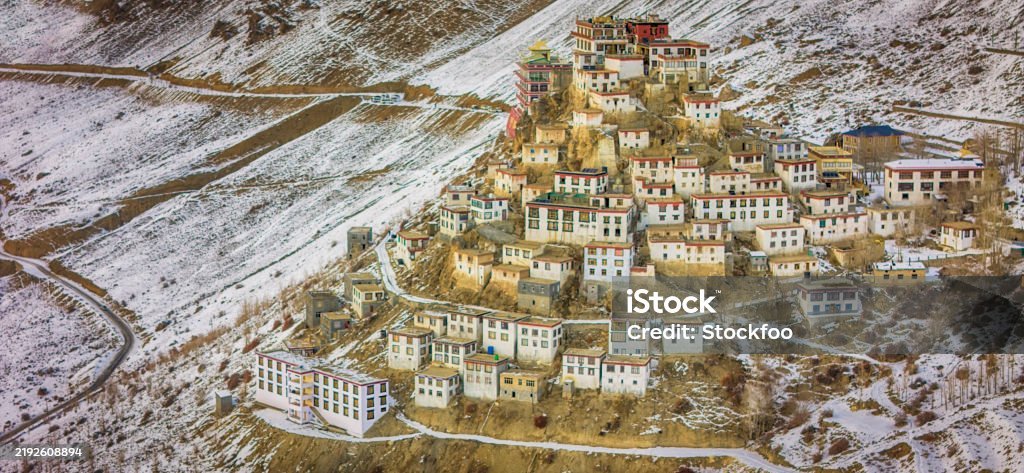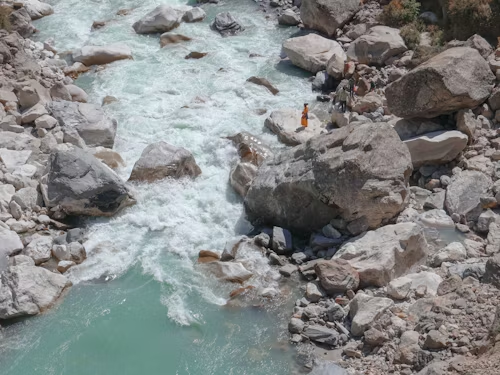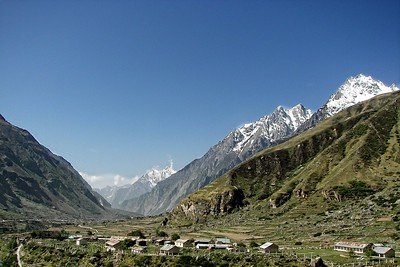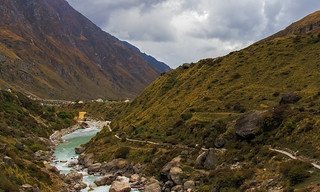Introduction: Why Is Mana Village Called the Last Indian Village?
High in the Himalayas, nestled close to the Indo-Tibet border, lies Mana Village, famously known as the Last Indian Village. Located in Uttarakhand’s Chamoli district near Badrinath, this scenic hamlet attracts travelers, pilgrims, and adventurers alike. Its unique position makes visitors wonder: Why is Village so popular, and what makes it a must-visit destination?
The quick answer is that Mana Village is not only geographically significant but also culturally rich. It serves as a gateway to ancient legends, the origin point of the Saraswati River, and offers breathtaking Himalayan views. At an altitude of about 3,200 meters, Mana Village is more than just a border village—it’s a blend of spirituality, mythology, and natural wonder.
This article provides a complete guide covering the village’s history, cultural importance, how to reach it, what to explore, and essential travel tips for those planning a trip to this iconic location in Uttarakhand.

What Is Mana Village?
Mana Village is a small settlement situated about 3 km from the holy town of Badrinath in Uttarakhand. It lies close to the Indo-Tibet border and has been recognized by the Government of India as a Tourism Village under the “Vibrant Villages” initiative.
- Location: Chamoli District, Uttarakhand
- Altitude: ~3,200 meters above sea level
- Specialty: Last Indian village near the Indo-Tibet border
- Nearby Landmark: Badrinath Temple (one of the Char Dhams)
Historical and Mythological Significance
Connection to the Mahabharata
Village is steeped in mythology. According to legends, it was the place where the Pandavas passed on their way to heaven. The Bhim Pul, a natural rock bridge over the Saraswati River, is said to have been placed there by Bhim for Draupadi to cross.
Saraswati River Origin
Another sacred highlight is the point where the Saraswati River emerges from between the mountains before merging with the Alaknanda at Keshav Prayag.

Why Visit
- Cultural Richness: Home to the Bhotia community with Tibetan-influenced culture.
- Sacred Legends: Myths linked to the Pandavas and Veda Vyasa.
- Natural Beauty: Majestic Himalayan peaks and pristine rivers.
- Unique Attractions: Last Indian tea shop, caves, and temples.
- Proximity to Badrinath: Easy to combine with Char Dham pilgrimage.
Top Attractions
1. Vyas Gufa
Believed to be the cave where sage Veda Vyasa composed the Mahabharata.
2. Ganesh Gufa
A nearby cave where Lord Ganesha is believed to have written the epic as dictated by Vyasa.
3. Bhim Pul
A rock bridge over the Saraswati River, tied to Mahabharata legends.
4. Saraswati River Origin
A must-see natural wonder where the holy river emerges with great force.
5. Last Tea Shop of India
A quirky yet famous attraction, offering chai at the “Last Indian Tea Shop.”
How to Reach Mana Village?
By Air
- Nearest Airport: Jolly Grant Airport (Dehradun), about 320 km away.
By Rail
- Nearest Railway Station: Rishikesh, approx. 297 km away.
By Road
- Well connected by road up to Badrinath (3 km from Mana).
- Regular buses and taxis operate from Rishikesh, Haridwar, and Joshimath.

Best Time to Visit Mana Village
- Summer (May–June): Pleasant weather, ideal for sightseeing.
- Monsoon (July–September): Heavy rains may cause landslides, travel with caution.
- Autumn (September–October): Clear skies and best mountain views.
- Winter (November–April): Village remains closed due to heavy snowfall.
Quick Answer / Key Takeaways
- Mana Village is the last Indian village near the Indo-Tibet border in Uttarakhand.
- Located 3 km from Badrinath Temple, it is famous for its mythology and natural beauty.
- Attractions include Vyas Gufa, Bhim Pul, Saraswati River origin, and the Last Tea Shop.
- Best time to visit: May to October (village closes in winter).
- Easily accessible from Rishikesh, Joshimath, and Badrinath.
FAQ about Mana Village
1. Why is Mana Village called the Last Indian Village?
Because it is the last inhabited settlement before the Indo-Tibet border in Chamoli, Uttarakhand.
2. How far is Mana Village from Badrinath?
It is just 3 km away, easily accessible by road.
3. Is photography allowed in Mana Village?
Yes, photography is allowed, but be respectful around locals and religious sites.
4. Can I visit Mana Village in winter?
No, the village is closed from November to April due to heavy snowfall.
5. What is the cultural background of Mana’s residents?
The locals belong to the Bhotia community, with Tibetan cultural influences.
Local GEO Insights: Mana Village in Uttarakhand
Village is a top search destination for terms like “Last Indian Village near Badrinath” or “Village near me.” Its proximity to Char Dham pilgrimage sites boosts its popularity.

- Nearby Attractions: Badrinath Temple, Tapt Kund, Charan Paduka trek.
- Local Tips:
- Carry woolens even in summer.
- Stay hydrated at high altitudes.
- Respect village customs and environment.
Local businesses and homestays can enhance their presence with Google Business Profile listings, accurate NAP details, and encouraging guest reviews.
Conclusion: Mana Village—Where Mythology Meets the Himalayas
The Mana Village in Uttarakhand is much more than a geographical landmark. It’s a living museum of legends, spirituality, and natural grandeur. From the ancient caves of Vyasa and Ganesha to the thundering Saraswati River, every corner of the village holds a story.
Whether you’re a pilgrim on the Char Dham route, a culture seeker, or an adventurer craving Himalayan landscapes, Mana offers a once-in-a-lifetime experience.
Ready to explore the last Indian village? Pack your bags and let Mana Village in Uttarakhand leave you spellbound with its legends and landscapes.

